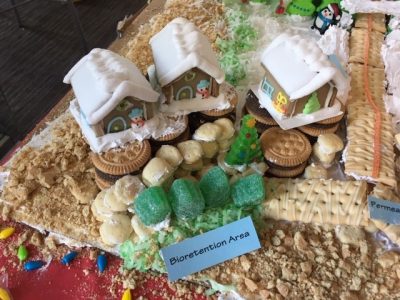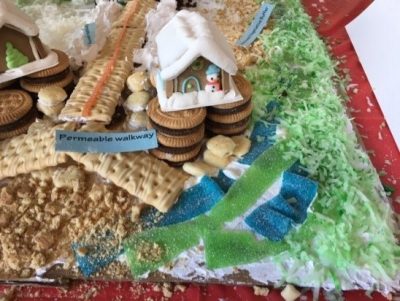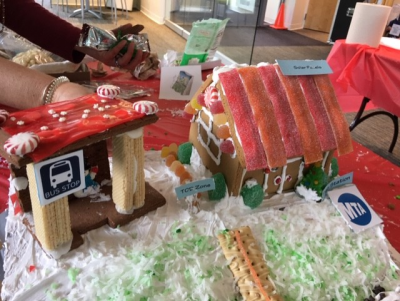Every year UConn Avery Point hosts a competition to make a gingerbread house. This year CIRCA built a resilience corridor and transit-oriented development (TOD) zone from candies and gingerbread cookies.
We were inspired by the resilience corridor cross-section proposed for the Resilient Connecticut project for New Haven and Fairfield Counties. The aim is to connect the shoreline communities that are sharing a similar level of flood risk to communities with less flood-risk with “resilient corridors”. Our gingerbread design included the shoreline communities, a resilience corridor, resilience hub, and transportation egress zone.
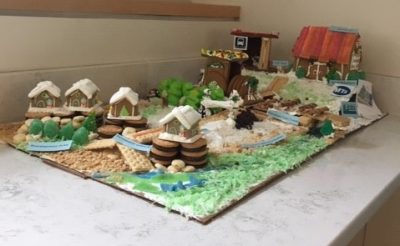
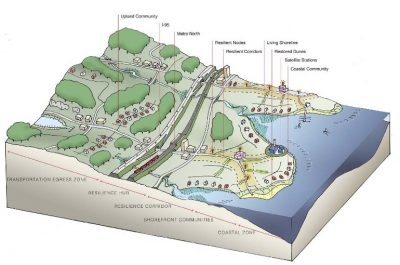
Resilience for shore-front communities
The gingerbread shore-front communities are designed to adapt to sea-level rise and frequent flooding effects.
The adaptation approaches include:
Home Elevation
The small gingerbread house community has higher risk levels of flooding. CIRCA sea level rise projections recommend that communities plan for 20 inches of sea-level rise by the year 2050. The base level of the houses elevated according to ASCE 24-14 guidelines.
Elevated Permeable Walkways
The access to the shoreline community is made by permeable walkway design of oyster crackers that are sloped from the shoreline and elevated to the house base floor level. The permeable walkways and roads are installed on a gravel base with elevated under-drain to filter the flood to the underlying soils. This concept was also used for resilience corridor design with pastry crisp bars.
Bioretention Area
The runoff from the residential areas and driveways are stabilized through sloped permeable walkways that direct the flow to the vegetative surface to stabilize the runoff. This landscaped lawn area made from green plant candies are placed at the edge of the road and shoreline.
Riprap Shoreline
The scouring on the porous and sand are tried to reduce by the crumbled graham cracker made rip-raps to lessen the erosion by the bay.
Resilience for river-front communities
Rivers in Connecticut connect the coastal and inland communities. The rivers have a diverse set of marshes, habitats, and soils.
Un-mowed Vegetative Buffers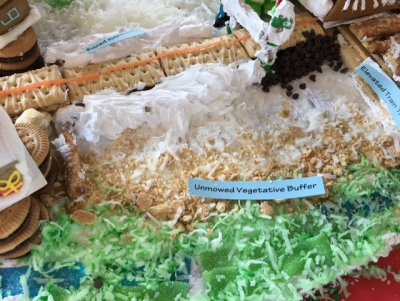
The natural vegetative cover around the river forms thicker and denser buffer zone to filter sediment and nutrients to move towards resilience corridor. We built sand and ripraps behind this buffer zone and mulch around the road. Most of our mulch is covered by the snow piled by the side of the way by our public workers.
Elevated road and train tracks
The resilience corridor allows egress to the higher transit-oriented zone. It perpendicularly crosscuts with the MTA rail line and I-95. The passage from the resilience corridor is regulated with traffic signs. The elevated train track and highway is raised along its entire length by wafers, which allows bridge access to the river on the right.
Coastal forest
Forests can reduce the impact of coastal hazards by dampening waves, stabilizing sediment, and absorbing water. The train tracks are also protected by coastal forest on the left, which created a natural habitat for our penguins and llamas.
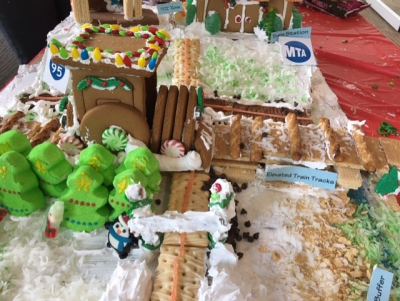
Resilience Corridor
Resilience corridors is a planning strategy that utilizes existing roads to the vulnerable coastal communities to higher ground upland territories. Our wafer elevated pastry crip bars, in this case, connect our mini gingerbread shoreline community to the transit-oriented development zone uphill. This is a retreat planning effort to give egress route to the homeowners to live both near and far from the developments.
Transit-Oriented Development Zone
A transit-oriented development (TOD) is a type of urban development that maximizes the amount of residential, business and leisure space within walking distance of public transport. We were only able to build a bus stop and train station from the gingerbreads due to the space limits. However, the TOD zone is a pedestrian-oriented and mixed-use community. Our gingerbread houses are powered by solar panels from sour candy strips and fruit loops.
We have a chance to increase our resilience to climate change and adopt sustainable solutions with our everyday actions (and a piece of candy!)
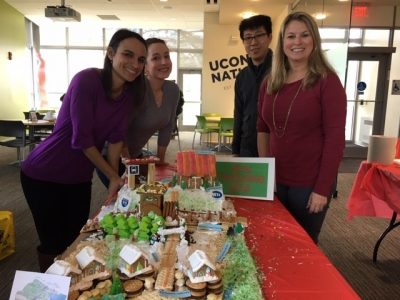
From all of us at CIRCA, we hope that you have a resilient and happy holiday season!
